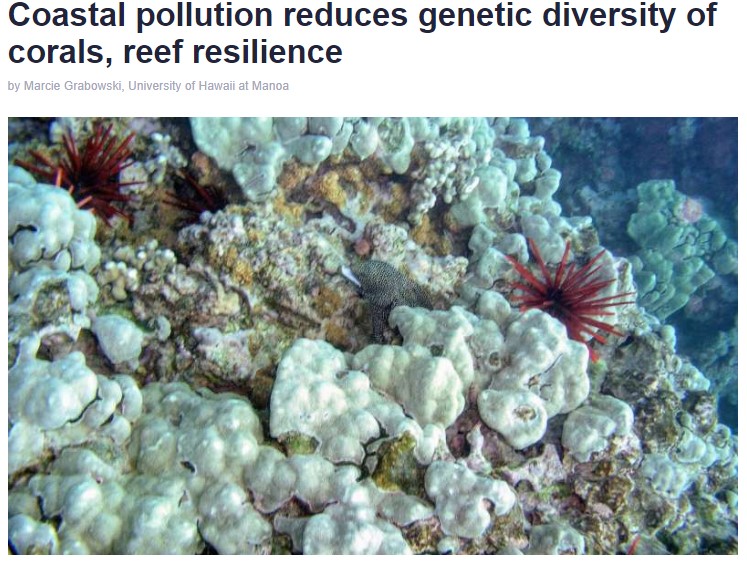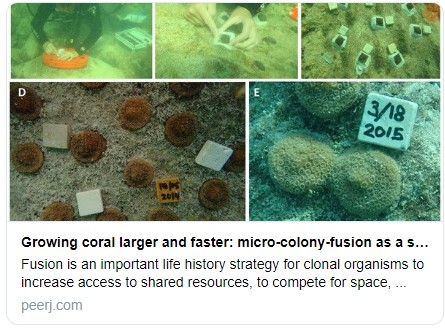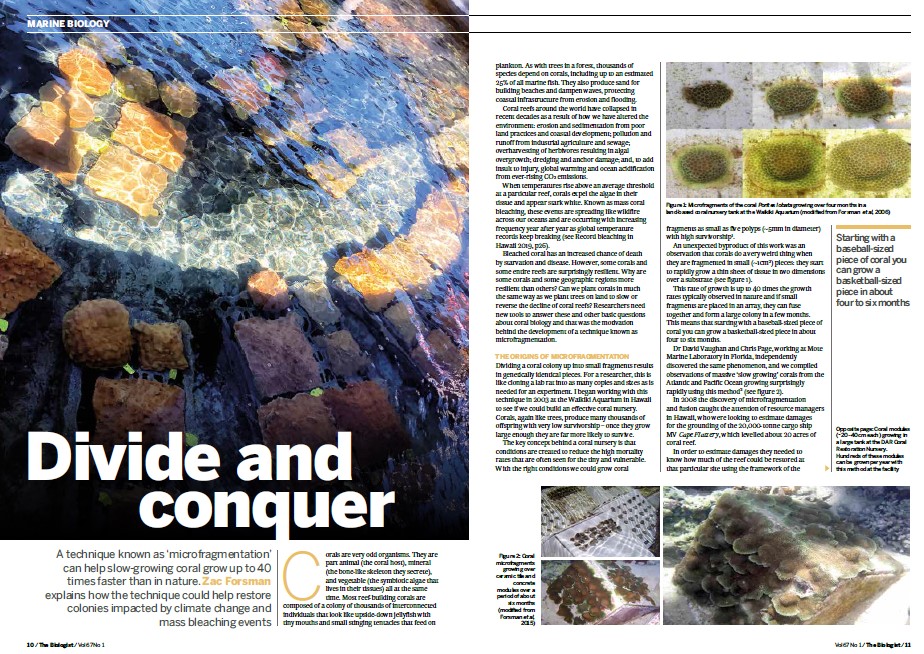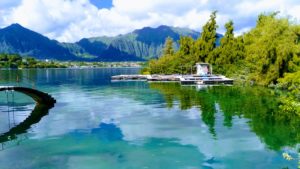
I am a Research Faculty at the Hawaiʻi Institute of Marine Biology, working in the ToBo (Toonen/Bowen) laboratory. I am interested in using molecular and ecological data to support conservation.
Reef building corals are a fascinating and challenging system to study. They are an ancient and diverse lineage, and are the foundation of an ecosystem that provides essential habitat for fisheries, sand for beaches and protection for shorelines, and home to up to 1/4 of marine life.
Coral reefs are made possible by a unique partnership between corals and symbiotic algae that can breakdown during increasingly frequent marine heatwaves, which leaves corals ‘bleached’ stark white with no algae and vulnerable to disease and mortality. Marine heatwaves are causing alarming mass bleaching events, and major declines of reefs globally.
Can we maintain and preserve coral reefs for future generations?
I use genetic and ecological tools for applied conservation. Here are some highlights:
Genetic studies:
 Which species are at risk of extinction?
Which species are at risk of extinction? Genetic data supports conservation of corals, plants, and invertebrates.
e.g: Johnston E, Forsman ZH, Schmidt-Roach S, Pinzon J, Flot JF, Toonen RJ (2017) A genomic glance through the fog of plasticity and diversification in Pocillopora. Nature Scientific Reports. 7:5991
 How are species and populations related?
How are species and populations related? DNA provides a 'map' of relationships, revealing new species and hidden patterns of biodiversity.
e.g Forsman ZH, Barshis D, Hunter CL, Toonen RJ (2009) Shape-shifting corals: Molecular markers show morphology is evolutionarily plastic in Porites. BMC Evolutionary Biology 9:45
 Will corals be able to adapt?
Will corals be able to adapt? Recent divergence across habitats, suggests rapid adaptation. Work is urgently needed to understand these extraordinary patterns of variation.
e.g. Tisthammer KH, Forsman ZH, Toonen RJ, Richmond RH (2020) Genetic structure is stronger across human-impacted habitats than among islands in the coral Porites lobata . PeerJ
Restoration ecology:
 How fast can we grow coral?
How fast can we grow coral? The micro-fragmentation method results in rapid tissue growth; a key method for reef restoration and conservation research. The method is used at the DAR Coral Restoration Nursery to produce large coral covered modules. Coral micro-fragments can also be used as a biological assay.
Forsman ZH, Vaughan D, Page CA, Toonen R (2015) Growing coral larger and faster: accelerating coral cover by colony fusion; PeerJ 3:e1313
 Can we mass produce coral covered structures?
Can we mass produce coral covered structures? The micro-fragmentation method can be used to rapidly cover substrates with coral tissue. Can this method be used to mass produce coral seedlings, or to turn artificial breakwaters from 'gray' to 'blue' infrastructure?
Forsman ZH (2020) Divide and conquer: how the microfragmentation technique can help restore coral impacted by climate change and mass coral bleaching. The Biologist, Royal Society of Biology, vol. 67. No1. London
 Can we cultivate a floating coral reef?
Can we cultivate a floating coral reef? The HIMB Coral Nursery is a floating coral reef, built from naturally settled corals rescued from recycled dolphin and aquaculture pens. Our goal is to use ecological data to prevent reef decline and promote restoration.
See my full CV, publications, or Google Scholar Profile for additional information.